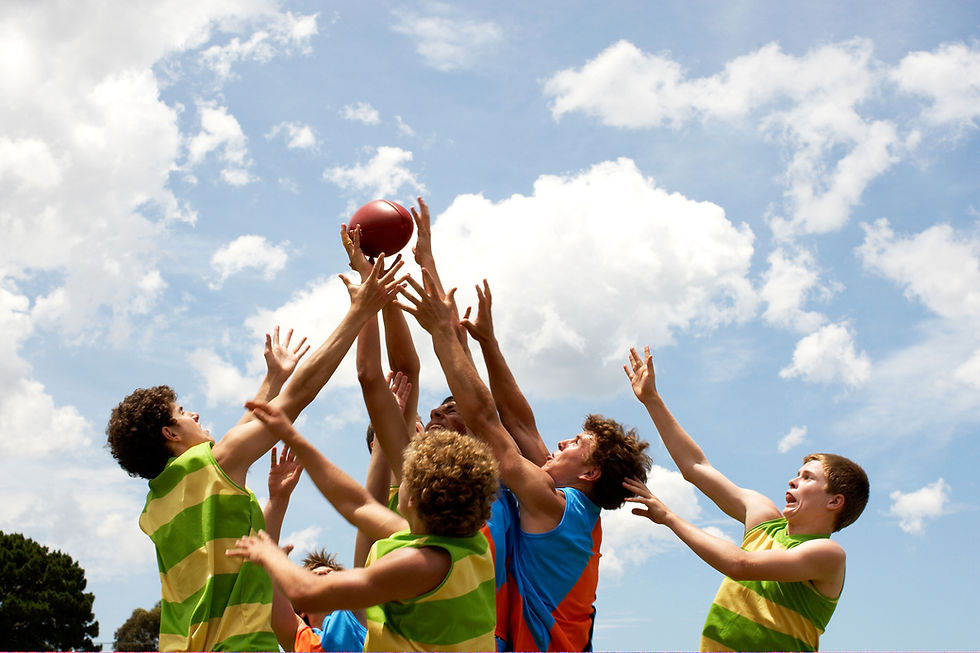Hip Pain in Children
- steph0617
- Mar 25, 2024
- 4 min read
Recently, Mr 6 had a visit to the Emergency Department for hip pain. I was concerned about serious injury. Luckily for me, I knew how to manage this and what I should be looking out for.

When our children have pain, it can be difficult to know what to do. Do they need to rest, do they need treatment, do they need an x-ray?
If they need treatment, who should we take them to?
How do we differentiate the serious concerns from everything else?
Mr 6 fell out of a tree. He was climbing (as usual) and the branch he was hanging on snapped. He fell approximately 3 metres onto his feet.
He didn’t have immediate pain and was quick to run off to do the next task in his busy play schedule.
Then, he jumped off the top of a playground, about 2.5m high, and immediately started limping and holding his hip.
He said it wasn’t sore, and he kept playing with his friends. As the afternoon went on, I observed him to limp more, sit out from playing and start to pull out from running. He still said it wasn’t sore.
I happened to be sitting with a colleague at the time, and we both had an uneasy feeling.
Worst case scenario was running through my mind! At this age, some serious hip pathologies can occur.
What are the things we worry about in Children with Hip pain?
With this particular mechanism of injury, my main concern would be some sort of disturbance to the bone structure, such as a SUFE or some other type of fracture.
1) SUFE (Slipped Upper Femoral Epiphysis)
A SUFE occurs when the upper part of the femur (thigh bone), slips from its normal alignment. This can cause hip, groin, thigh or knee pain, and is usually seen with a limp and a turning out of the leg.
Sometimes we see the affected leg appears shortened, and the child will be turning it out before moving it.
A SUFE IS A MEDICAL EMERGENCY!
100% of the time, this injury requires an orthopaedic assessment, and surgery to correct the slip.
If this injury is missed, it can have serious ramifications for the long-term health of the hip joint. If this injury is suspected, it is important to assess, Xray and refer for appropriate management as soon as possible.
2) Perthes Disease
Perthes Disease occurs when there is a disruption to the blood supply in the femoral head, leading to a weakening of the bone and changes in the shape of the surfaces.
We don’t know why this occurs, and management varies between children. Some children need active management to reach full resolution, and others will need to be monitored, but will recover on their own.
Management usually includes activity modification, strengthening and movement retraining in order to change loading patterns inside the joint.
Occasionally, these will require surgery.
3) Avulsion Fracture of the Pelvis
An Avulsion fracture can sometimes occur in young pelvises when muscles pull hard on their soft attachments and dislodge from the bone.
These are most frequently seen in our active teenage population, and more often than not, involves the rectus femoral muscle attachment at the front of the pelvis, or the hamstring attachment at the back of the pelvis.
These injuries usually have a favourable prognosis; however, early diagnosis and management is crucial.
Treatment for these usually involves a period of activity modification, movement retraining and strengthening.
Your physiotherapist should also examine the opposite side to ensure any asymmetries are addressed and any predisposing factors identified.
Other uncommon but serious presentations that can occur in children include bone or blood diseases, undiagnosed genetic conditions and serious medical concerns.
With any of the above conditions, it is essential that early assessment and diagnosis is performed. If you have concerns, please contact our team for an appointment as soon as possible.

When I assessed Mr 6's hip, I found him to be lacking key movements (likely due to pain) and noted some specific changes in his walking and movement. I was concerned he had a SUFE.
So down to PCH we went.
Mr 6 isn’t the most reliable communicator of pain and injury (this is very common in children!), and I was worried PCH wouldn’t take him seriously.
Despite this, he did get an Xray and the next day, we got an MRI.
Thankfully, his imaging showed no serious pathology in his hip and excluded SUFE.
He was diagnosed with Transient Synovitis, essentially swelling inside the hip joint secondary to compression of tissues in the joint.
Management for this included modifying his activity short term to allow it to settle and working on the control of his landing (and judgement on heights to jump from).
For a short time, he also needed some soft tissue physio work (to decrease the amount of time he needed off sport and activity) and completed a few exercises at home to boost his healing.

Children with hip pain can present a challenging clinical picture. It is so important to ensure a correct diagnosis and management plan is formed as early as possible.
There are some major injuries and illnesses to be aware of and screen for.
Long term, with the correct management plan, hip pain in children usually resolves.
Good management and physio intervention is essential for rapid recovery.
If you have any concerns, or concerns for your loved ones, we are here to assist you. Click the below link to make an appointment with one of our expert team members.










Comments